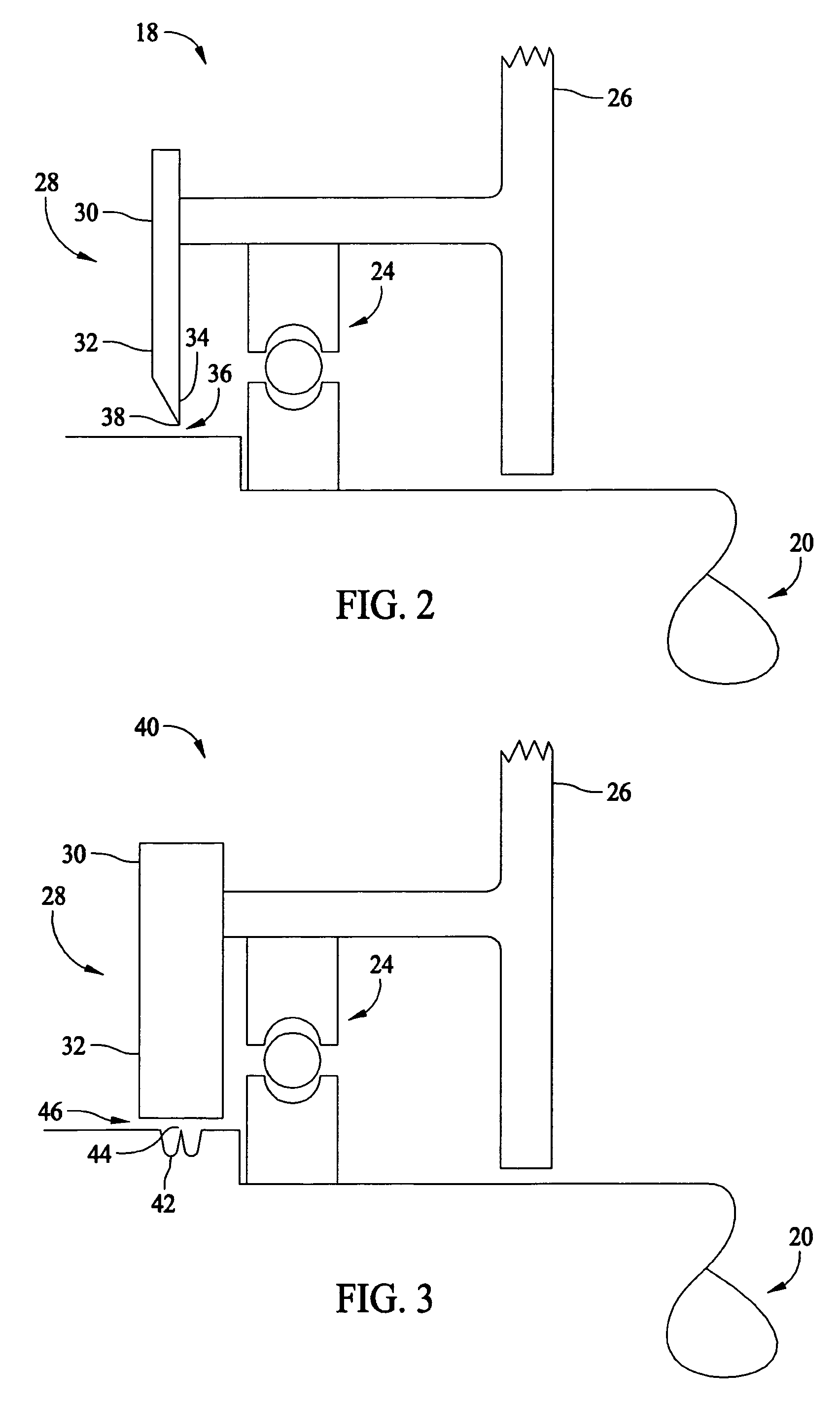Bearing current reduction assembly
a technology of bearings and assemblies, applied in the direction of mechanical energy handling, dynamo-electric machines, supports/encloses/casings, etc., can solve the problems of affecting motor reliability and performance, affecting the reliability of motors, and affecting the effect of motors, so as to reduce or eliminate the current flow from the bearings from the rotor to the stator, reduce or eliminate the effect of current flow through the bearings
- Summary
- Abstract
- Description
- Claims
- Application Information
AI Technical Summary
Benefits of technology
Problems solved by technology
Method used
Image
Examples
Embodiment Construction
[0011]FIG. 1 is a cross-sectional view of a motor assembly 10 including a motor housing 12, a stator 14 having a plurality of windings, a rotor assembly 16 and a bearing current reduction assembly 18. Rotor assembly 16 includes a rotor shaft 20 mounted on a rotor core 22. A bearing 24 is positioned between an endshield 26 and an inner bearing cap 28.
[0012]Energizing the stator windings with alternating current produces a changing magnetic field or flux within rotor core 22 causing rotor shaft 20 to rotate. The angular velocity of rotor shaft 20 is partially a function of the power delivered to motor assembly 10. Typically, an adjustable speed drive circuit (not shown) is coupled to an inverter (not shown) and motor assembly 10 to vary an angular velocity of rotor shaft 20. High speed switching of power supplied to motor assembly 10 often produces a charge build up between rotor shaft 20 and stator 14.
[0013]Bearing current reduction assembly 18 provides an electrical path from rotor ...
PUM
 Login to View More
Login to View More Abstract
Description
Claims
Application Information
 Login to View More
Login to View More - R&D
- Intellectual Property
- Life Sciences
- Materials
- Tech Scout
- Unparalleled Data Quality
- Higher Quality Content
- 60% Fewer Hallucinations
Browse by: Latest US Patents, China's latest patents, Technical Efficacy Thesaurus, Application Domain, Technology Topic, Popular Technical Reports.
© 2025 PatSnap. All rights reserved.Legal|Privacy policy|Modern Slavery Act Transparency Statement|Sitemap|About US| Contact US: help@patsnap.com



